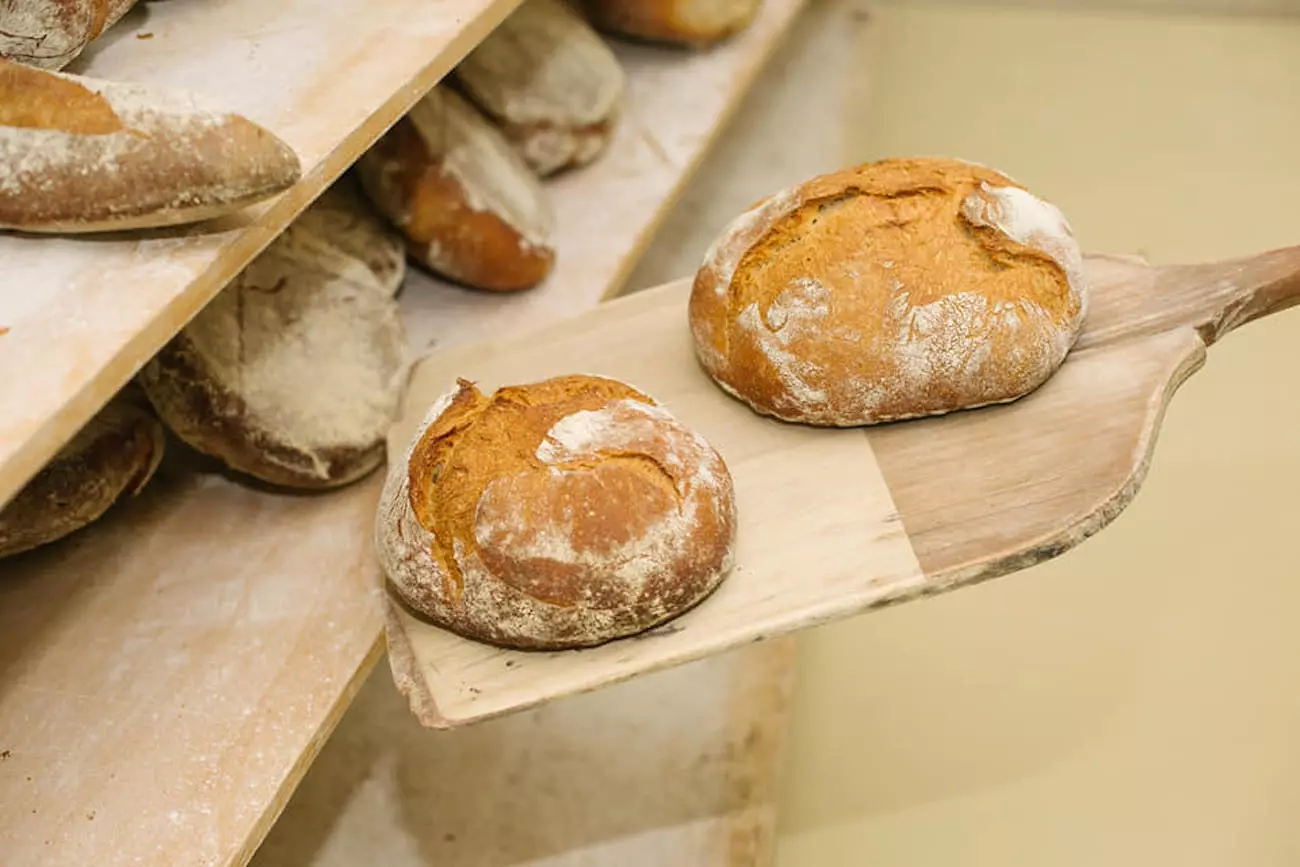
O Porriño: 400 years of baking history
To many people the name of O Porrino doesn't tell you much. It is not one of the most popular towns in Galicia and surely it is not one of the most monumental either. For many others it is little more than a name on the periphery of Vigo , perhaps that site known by the pink granite or the town next to the huge industrial estate that extends to the sides of the highway of Portugal.
Their loss. Because Or Porrino is that , a town in the Vigo area in which the quarries and industries located in the estates are an inseparable part of the landscape and way of life. But it is also much more.
It is, for example, the hometown of the architect Antonio Palacios , the architect of the image we have of that Madrid at the beginning of the 20th century. Palacios is the author, among others, of buildings such as the Madrid Casino, the Communications palace what is today town hall headquarters , the Spanish Bank of the River Plate (today the headquarters of the Cervantes Institute), of the Circle of Fine Arts , or many of the original stations of Line 1 of the Madrid metro.
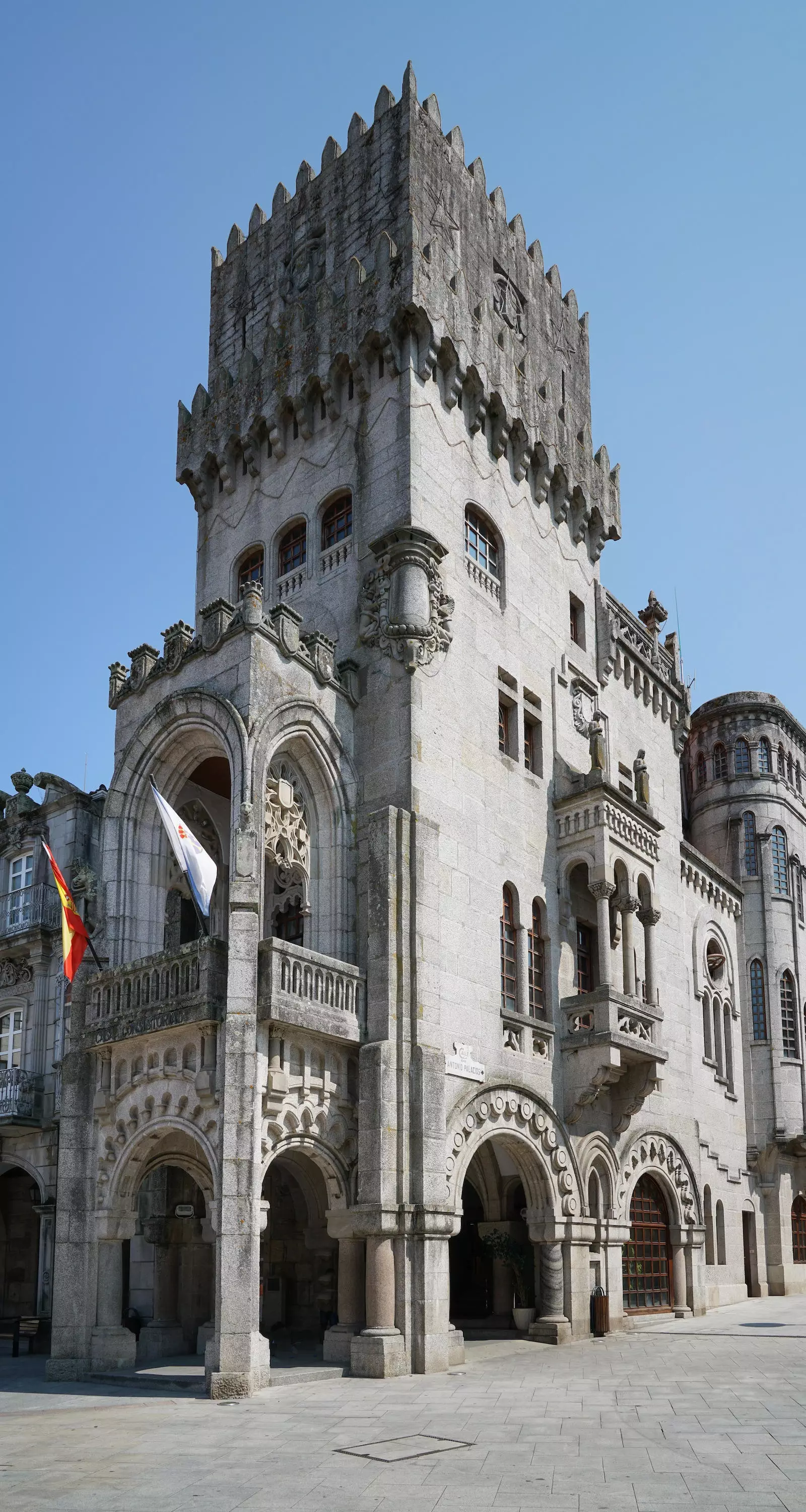
City Hall of O Porriño (and Antonio Palacios)
After Madrid, the place that preserves the most works by Palacios it's your town . The main one, which is surely also the most important monument in the municipality, is the striking town hall. A little higher, barely 100 meters, is the Praza do Cristo , surely the most charming corner of the center. Here Palacios built the apothecary for his brother , which today still houses a pharmacy with that old-fashioned air from another time, and the monument in the center of the square.
For having, O Porriño even has the only metro station in Galicia, also designed by Palacios . It is the old portal of the Gran Vía station, which the architect built in the Saint Louis Network , and that, when it was demolished in 1971, it was moved to the park that is today in front of the cemetery.
So there is a lot more to O Porriño than one would imagine if you just drive along the motorway. But the great treasure of the town is not its architecture: It is their bread, a historical bread that makes the town one of the baking capitals of Galicia.
And like this, in Galicia, with towns like Cea, Carballo, Carral or Neda is saying a lot, we better stop a little his story.
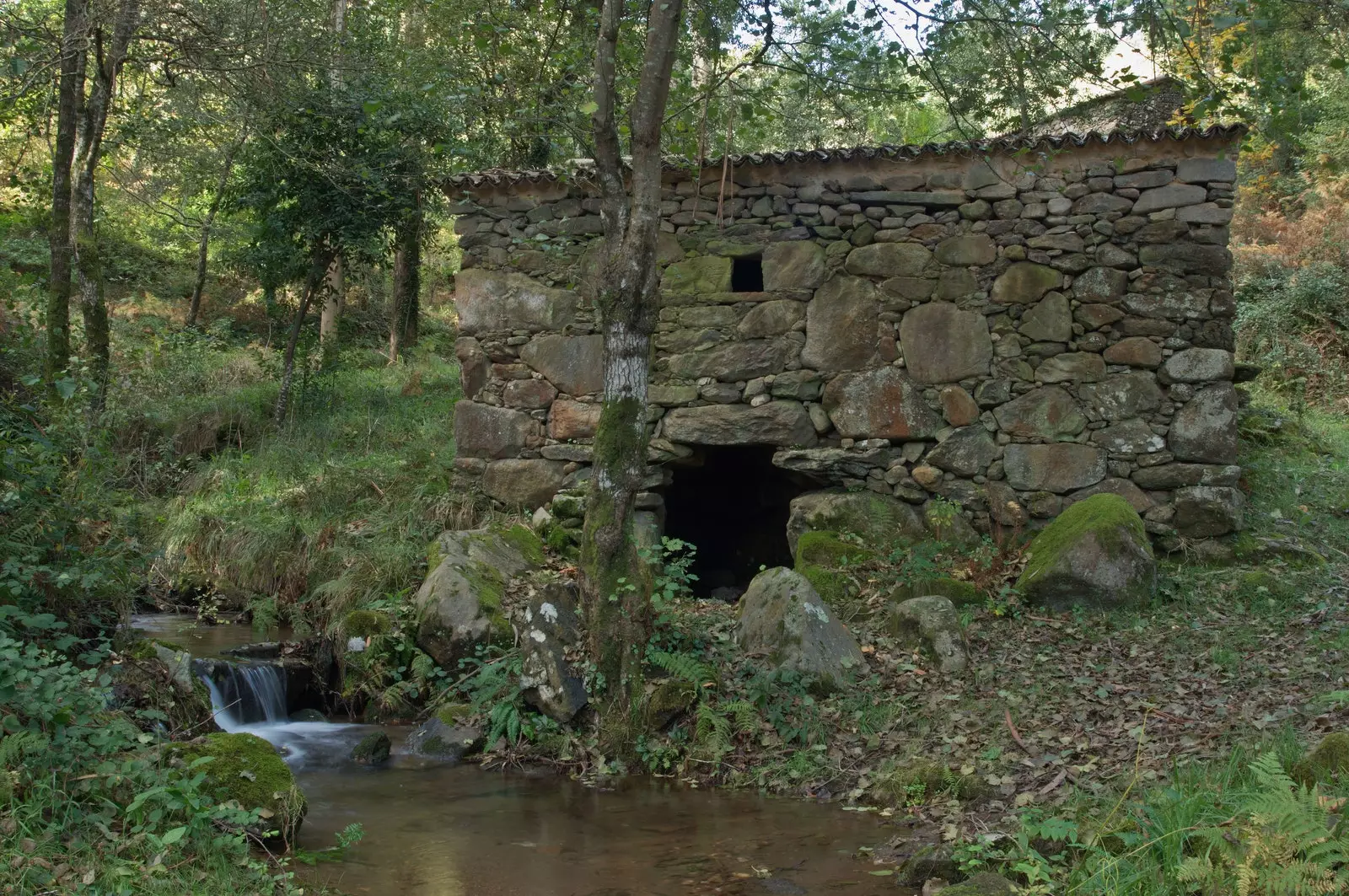
The mills of O Porriño
The bakers of O Porriño They have probably been making bread for a long time, although the first known reference we have is from the year 1575. Not bad. We know that at that time there were already several mills in the area. And where there are mills, there is bread.
I already did in 1600 a bread factory was installed here which would later become a Royal Bakery , one of the few in Galicia, why here? Because at that time the most important town in the area was Tui, a few kilometers to the south.
There, in that border town, was the cathedral, with its bishop and its court of deans, canons and other members of the council and the troops that guarded the raia were quartered. That is why the bread that was made in the factory for the soldiers was known as ammunition bread.
O Porriño, at that time a small village, was in a strategic place , a little over half a day's journey from Tui, but also from the ports of Vigo, Baiona and Redondela . And at the most important crossroads in the province. Here the road that led from Santiago and Pontevedra to Portugal met with the one that went from Vigo to the border. Both were here with the old road to Castile -later also with the train to the plateau- through which the flour and grain that were needed to complement those produced in the area arrived.
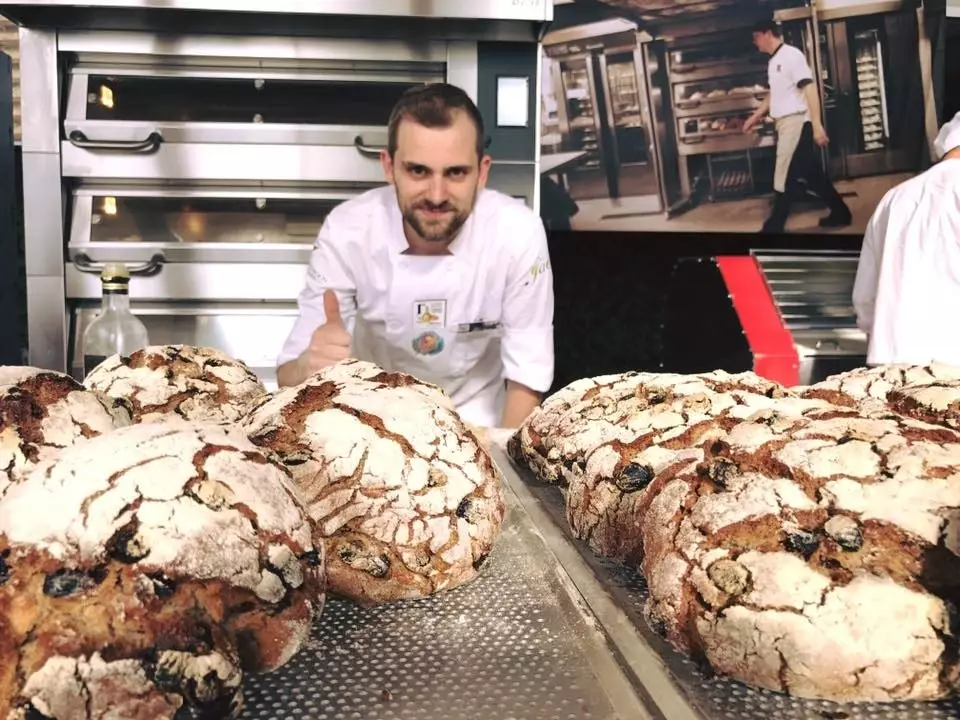
bread as ammunition
So travelers and merchants who came from Madrid, Salamanca or Ourense met here with those who they came from A Coruña, Santiago, Vigo, Porto or Lisbon They mingled with the soldiers of Tui and with those in charge of supplying the ships that stopped at the ports of the estuary. Soon there was a market, one of the most important in southern Galicia, which was held on the first day of each month. And the bread, which was originally made for the soldiers, began to travel and gain fame beyond the region..
In 1665 the Portuguese invaded the area and burned both the Royal Factory like many of the village mills . Even so, the baking tradition continued . The first porriño baker whose name we know, Diego Gonzalez , was active just 10 years later. And in the following decades more ovens appeared in the Aloque's neighborhood , which came to be known as "the great bakery" or in those of San Bieito and San Sebastián , where some of the historic bakeries still stand today.
Such was its fame and the town's baking production capacity, that when Dupont's French troops took over the province in 1809, they set up one of their provisioning posts here and they put the old royal factory to bake exclusively for them.
But, although the story is interesting, What remains of all that today?
On the one hand there is a whole series of hiking trails that allow you to visit some of the near 30 mills preserved by the municipality . The paths to the Muiños do Castro, the Muiños de Chenlo, those of Mosende or those of O Cotiño They will make you forget that landscape that surrounds the highway and that you are just over 15 minutes from the center of the largest city in Galicia.
Although the important thing is bread . And that one is still there, almost 500 years later, more alive than ever. 15 years ago, a group of 14 bakers from the town were associated to protect the bread of O Porriño , a relatively high** production of hydration** -around 60%-, semi-hard rind and fluffy, honeycombed crumb ; that was the legacy that had come from their parents and grandparents and that they wanted to preserve for the future.
It was then that the O Porriño Bread Fair . And, along with it, tireless dissemination work: talks, courses, publications and the struggle, that eternal struggle, with the administrations to achieve some form of protection.
In O Porriño, bread continues to be a fundamental part of everyday life. Not long ago, a specialized publication selected the 80 best bakeries in Spain and two of them -O Forno de Mosende and Amachy - They were here, in the village. Along with them, historical ones such as Chinchina or Argibay and many others continue to maintain the level of local bread.
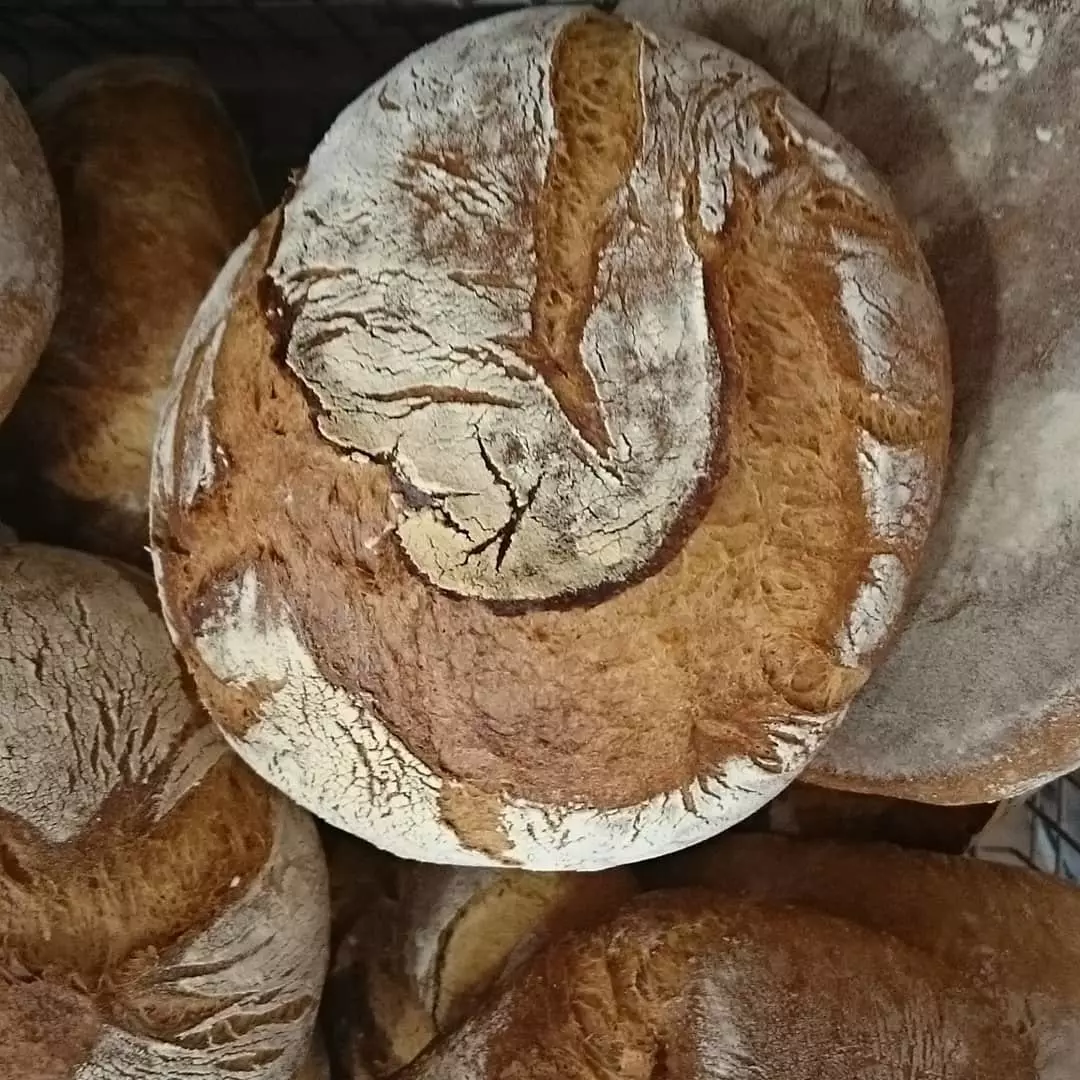
One of the bakeries that serves that Pan do Porriño that is already a protected brand
And this has finally begun to bear fruit. since a few weeks Porrino Bread is a officially protected brand that establishes the quality criteria of the elaborations that are identified with this seal . It is time that we start to see O Porriño as one of the sanctuaries of the bakery in the Iberian Peninsula and give its bakeries the value they have.
Some buildings of what was probably the most outstanding architect of the early 20th century in Spain, routes through nature, one of the best-preserved sets of mills in Galicia and, as if that were not enough, a bread that treasures centuries of history and tradition . And a subway station. There are more than enough reasons to stop at O Porriño.
